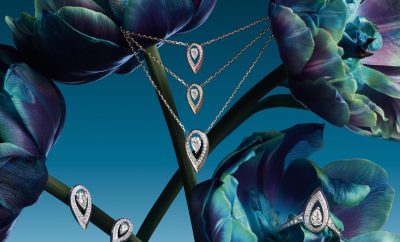Interviews
Les Misérables
Les Misérables is the motion-picture adaptation of the global stage sensation which has been enjoyed by 60 million viewers. Set against the backdrop of 19th-century France, Les Misérables tells an enthralling story of broken dreams and unrequited love, passion, sacrifice and redemption—a timeless testament to the endurance of the human spirit. Hugh Jackman plays ex-prisoner Jean Valjean, hunted for decades by the ruthless policeman Javert (Russell Crowe) after he breaks parole. When Valjean agrees to care for factory worker Fantine’s (Anne Hathaway) young daughter, Cosette, their lives change forever.
By Daniela Bonetto
![]() The accomplished behind-the-camera team includes a who’s who of expert craftspeople, led by Oscar-nominated director of photography Danny Cohen (The King’s Speech, This Is England), Oscar-nominated production designer Eve Stewart (The King’s Speech, Topsy-Turvy), as well as costume designer Paco Delgado (Biutiful, Bad Education).
The accomplished behind-the-camera team includes a who’s who of expert craftspeople, led by Oscar-nominated director of photography Danny Cohen (The King’s Speech, This Is England), Oscar-nominated production designer Eve Stewart (The King’s Speech, Topsy-Turvy), as well as costume designer Paco Delgado (Biutiful, Bad Education).
Following several weeks of rehearsals, costume fittings, and makeup and camera tests, the Les Misérables production began in Gourdon in the south of France. In this locale, Academy Award-winning director, Tom Hooper and his regular production designer, Stewart, had found an unrivaled mountainous landscape against which to shoot Valjean’s walk to freedom. Says Stewart: “It was important spiritually that we shoot in France, and Gourdon offered us something so special and unmatched.”
The filmmakers knew one of their biggest challenges in translating material from the theater to the big screen would be in opening it up to make it cinematic. Production designer Debra Hayward immersed herself in reams of research to inform the shared vision she and Hooper had for the look of the film. “It was important to pay homage to the musical, which we chose to do with the theatricality of the sets, and the colors and textures,” says Stewart, “but we felt it was equally important to make the reality believable. Otherwise, the drama and misery of the situations our characters were living in would not be as poignant and emotional.”
Life on the Docks
Once the production returned to England from France, principal photography moved into full swing. The ensuing locations provided the cast and crew with a tour of landmark historical sites in the U.K., as well as the opportunity to film a timeless story against some truly inspiring backdrops. Portsmouth Historic Dockyard in the south of England gave Hooper the almost biblical backdrop he needed for the film’s opening sequence. We first meet Valjean, alongside the other convicts, as they haul a massive ship in for repair. Soon after, Javert hands Valjean his precious ticket of leave.
![]()
Using one of the base’s dry docks, normally used to repair vessels—and which the crew ironically filled with water so it would appear as if the convicts were pulling the battered ship out of the water—presented one of the biggest logistical challenges on the film. The camera crane, the wave- and wind-machines and the rig with the ship’s ropes had to be craned into the dock during a very short window of preparation, given that the production had chosen to use one of the massive functioning docks. On shooting days, navigating cast and crew down the very steep and wet steps to the docks was seriously hair-raising, and it was a small miracle that the unit left that location without injury.
![]() Now that it had its sea legs, the unit relocated to Chatham, another working historic dockyard and museum in Kent in the southeast of England. The site included Fantine’s factory set, created in the Tarring Yarn House, historically used for dipping molten yarn for rot proofing. Discovered by Stewart, the beautiful building offered the perfect space in size, color palette and texture; Stewart and her team only had to add the set dressing. Says the production designer: “It was a rope barn where they made rope for Nelson’s boat to fight Napoleon, a rather magical, if ironic, connection with our story.”
Now that it had its sea legs, the unit relocated to Chatham, another working historic dockyard and museum in Kent in the southeast of England. The site included Fantine’s factory set, created in the Tarring Yarn House, historically used for dipping molten yarn for rot proofing. Discovered by Stewart, the beautiful building offered the perfect space in size, color palette and texture; Stewart and her team only had to add the set dressing. Says the production designer: “It was a rope barn where they made rope for Nelson’s boat to fight Napoleon, a rather magical, if ironic, connection with our story.”
Next up, the cast and crew shot the hospital for Fantine’s death scene and the confrontation between Valjean and Javert. Filmed in the cockloft of the ropery, the scenes were staged some four floors up in a space that is approximately a third of a mile long. It was the first time permission had been given to lens in the gorgeous historical building, the only one of its kind left in the world. The crew had to tread very lightly. The old timbers—some of which date back to the 15th century—have absorbed the fumes that resulted from the making of rope. This made the setting a virtual tinderbox. Use of naked flames and SFX smoke was strictly forbidden by the grounds, so the crew had to develop artificial methods to create flickering flames and smoke for dressing the set.
Chatham also provided the location for the streets of Montreuil-sur-Mer and its Red-light district, which Stewart and her team integrated credibly with the spectacular Lovely Ladies set built at Pinewood Studios (where the unit relocated after Chatham). To build the space, a visual and physical metaphor for Fantine’s descent, it required the combined skills of plasterers, carpenters, sculptors, greensmen, marine rigging specialists and scenic artists. Setting the “I Dreamed a Dream” number in the rotting hulk of an old ship mired in the mud of Montreuil-sur-Mer intensified the harrowing nature of the descent.
![]()
Elephant of the Bastille
The unit next moved to the Old Royal Naval College in Greenwich, Christopher Wren’s twin-domed riverside masterpiece and an iconic landmark in South East London. There, Stewart most notably positioned the Elephant of the Bastille, the Paris monument originally conceived by Napoleon and immortalized by Victor Hugo as Gavroche’s shelter in the Place de la Bastille. The piece provided a striking centerpiece for Lamarque’s funeral procession, the beginning of the student uprising and the film’s finale sequence.
As the finale covers the successful French revolution of 1848, by which time the rebels had mastered the art of building barricades, Stewart and Hooper knew they had to make the set as big as possible. Sourcing hundreds of pieces of reclaimed furniture—doors, pews, paneling, chairs and tables—from Wales, Belgium and various house clearances, Stewart and Robinson’s team had only two weeks to build a barricade onto the flatbeds of an Arctic truck, so it could be transported to Greenwich just ahead of shooting.
![]()
Streets of 1832 Paris
After another stint at Chatham and a brief visit to Winchester to shoot Valjean’s death scene in the beautiful, understated chapel of Winchester College—in addition to using Winchester’s cobbled streets for Javert’s pursuit of Valjean and young Cosette through the streets of Paris—the unit returned to Pinewood to begin the extended shoot on the newly built Richard Attenborough Stage. Here, the production designer created 1832 Paris, which she heavily referenced from the work of Charles Marville, a photographer who captured the city before it was largely torn down during the Haussmann Plan of the mid-1800s.
![]() Hooper says: “Building these colossal sets was great fun. I was trying to achieve a combination of extreme realisms so that the film would feel rooted in a visceral reality and magical realism. There’s an operatic aspect to it and therefore an opportunity to create a style that’s a bit heightened from reality.”
Hooper says: “Building these colossal sets was great fun. I was trying to achieve a combination of extreme realisms so that the film would feel rooted in a visceral reality and magical realism. There’s an operatic aspect to it and therefore an opportunity to create a style that’s a bit heightened from reality.”
Stewart describes that one of the biggest challenges was getting her carpenters to build in crooked lines. She laughs: “I literally had to drag rulers out of their hands because they couldn’t get their heads around building a window that slanted wildly to the right.” It was particularly important to Hooper and Stewart that the Café Musain, where the revolutionary students gather and where Marius performs “Empty Chairs and Empty Tables,” have an incredibly precarious lean to it, rendering it isolated and fragile and emphasizing the nature of their dwarfed revolution.
One of the wildest and most unexpected moments during the course of the shoot came when the students, led by Redmayne and Tveit, were building the barricade. Describes Hooper: “The plan was to build part of the barricade on screen, and then Eve and her team would complete the work she had prepared on a neighboring stage. But on the day of filming, and in a moment of wild abandon, I let the cameras run, and the students and citizens ripped every piece of furniture, every door, every shop front they could get their hands on and built the entire barricade in real time. It was exactly the energy and revolutionary spirit I’d wanted to capture.”
![]()
The unit had one more location to visit before returning to Pinewood: Boughton House, the Northamptonshire residence of the Duke of Buccleuch that has been dubbed the “English Versailles.” Most of the present building is the work of Ralph Montagu, 1st duke of Montagu, who inherited the house in 1683. A former English ambassador to France, Montagu was a passionate builder and patron of artists, craftsmen and decorators of every sort, and his transformation of the house he inherited was the manifestation of his dream to bring French beauty and style to an English landscape. It served perfectly as the location for Marius Pontmercy’s family home, where Valjean brings the wounded Marius back to his grandfather and where Cosette and Marius’ wedding takes place.
For the last few weeks of the shoot, the unit returned to Pinewood, where part of the Richard Attenborough Stage had been revamped to create Montfermeil, the inn where Valjean rescues Cosette from her miserable life with the Thénardiers and where the filming of the popular “Master of the House” number, featuring Bonham Carter and Baron Cohen, took place. One shot was added for Javert’s final suicidal jump into the Seine, which was shot at the spectacular weir on the River Avon in the center of the Georgian City of Bath.
![]()










0 comments